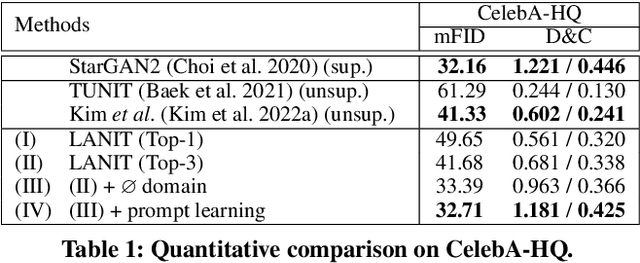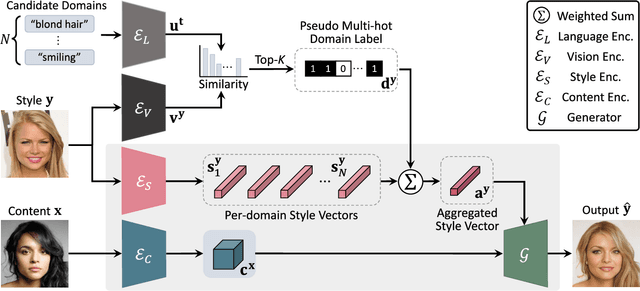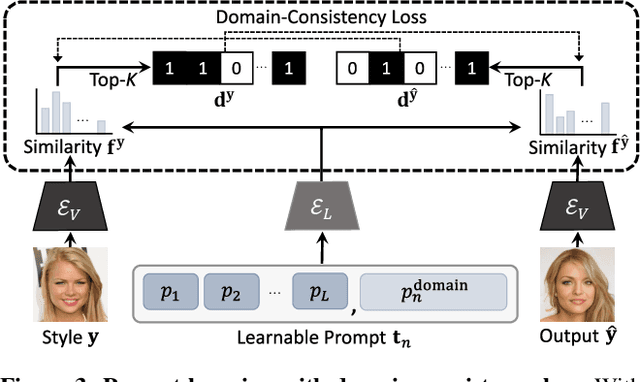LANIT: Language-Driven Image-to-Image Translation for Unlabeled Data
Paper and Code
Aug 31, 2022



Existing techniques for image-to-image translation commonly have suffered from two critical problems: heavy reliance on per-sample domain annotation and/or inability of handling multiple attributes per image. Recent methods adopt clustering approaches to easily provide per-sample annotations in an unsupervised manner. However, they cannot account for the real-world setting; one sample may have multiple attributes. In addition, the semantics of the clusters are not easily coupled to human understanding. To overcome these, we present a LANguage-driven Image-to-image Translation model, dubbed LANIT. We leverage easy-to-obtain candidate domain annotations given in texts for a dataset and jointly optimize them during training. The target style is specified by aggregating multi-domain style vectors according to the multi-hot domain assignments. As the initial candidate domain texts might be inaccurate, we set the candidate domain texts to be learnable and jointly fine-tune them during training. Furthermore, we introduce a slack domain to cover samples that are not covered by the candidate domains. Experiments on several standard benchmarks demonstrate that LANIT achieves comparable or superior performance to the existing model.
 Add to Chrome
Add to Chrome Add to Firefox
Add to Firefox Add to Edge
Add to Edge